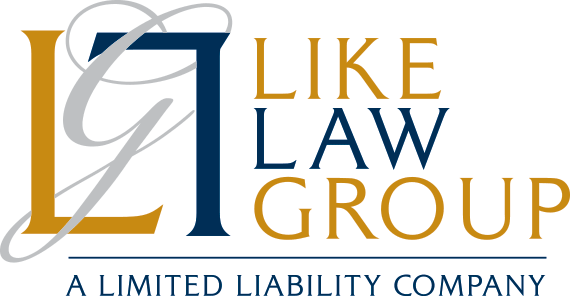What Is a Transfer-on-Death Deed?
If you own real property, such as a home, in your sole name but you have not created a trust and transferred your property’s title to the trust, it is virtually guaranteed that your beneficiaries (or heirs) will have to deal with probate after your death. If the time and expense required to create a living trust does not make sense for your situation but you still want to avoid the probate process, a transfer-on-death (TOD) deed may be the solution. A TOD deed (also known as a beneficiary deed) does what it sounds like it does—it transfers your real property to your selected beneficiaries upon your death, similar to a payable-on-death designation for a bank account or a transfer-on-death registration for an investment account. During your lifetime, you continue to own and control the real property, so you can sell it, lease it, refinance it, give it away, or do anything else with it you choose. You also continue to be responsible for paying the mortgage and taxes and maintaining the property. If you still own the property at your death, the TOD deed works to automatically transfer the property to your named beneficiaries without having to go through probate. And if you change your mind during your lifetime about whom you have named as beneficiaries in the TOD deed, you can amend or revoke it at any time.
How is it used?
More than twenty-five states now allow the use of TOD deeds, and more states are considering adopting laws that allow them. You do not have to actually live in a state that allows TOD deeds to be able to use one, but the property must be located in such a state. The requirements for creating a TOD deed vary by state, but in essence, the process includes the following basic steps.
Complete the TOD Deed
With the assistance of an experienced estate planning or real estate attorney, determine the specific form or language required for the TOD deed to comply with the relevant state’s law. Remember to look at the requirements in the state where the property is located. A TOD deed will look much like any other property deed, but it will contain specific language that makes it clear that the deed does not take effect until after your (the owner’s) death.
Name Your Beneficiary
Your beneficiary can be one or more people or organizations, such as a business or a charity. You may want to consider naming a contingent, or alternate, beneficiary in case your first choice for beneficiary passes away before you do. You want to be sure to use the beneficiary’s legal name rather than categories or relationships, such as “my children.” For example, if you are naming your two daughters as your beneficiaries, you should use “Jane Doe and Julie Smith” instead of “my daughters.” If you name more than one beneficiary, you should indicate on the deed how the beneficiaries will own the property (as equal joint tenants with rights of survivorship, as tenants-in-common, each as to an equal one-half share, or some other form of co-ownership).
Describe the Property
Be sure to use your property’s correct legal description in the TOD deed. Your property’s legal description may be found on the current deed recorded in the official property records, your sales contract, or your mortgage documents. However, legal descriptions are not always copied accurately. It is important to consult an experienced real estate or estate planning attorney or a title company regarding the preparation of deeds and the accuracy of legal descriptions on deeds.
Sign the Deed
If you are the property’s sole owner, you are usually the only person who needs to sign the deed. However, if you are married and live in a community property state or if you have declared the property your homestead, it may be prudent or required that both you and your spouse sign the deed, a joinder, or a waiver to show that your spouse has no objection. An experienced real estate or estate planning attorney or title company can ensure that your intended transfer meets all legal requirements and is properly documented.
If you co-own property with someone else as tenants in common, you can use a TOD deed to designate a beneficiary for your share of the property. If you co-own the property as joint tenants, all co-owners will need to sign the deed, and it will not be effective until the last surviving owner passes away. If only one co-owner signs the TOD deed, it will not be effective unless the signer is the last owner to die. Keep in mind that even if you and your co-owner sign a TOD deed, if you die first, the surviving co-owner can revoke the TOD deed before their death.
Example: Julie and John own property as joint tenants with rights of survivorship, meaning that when one of them dies, the other becomes the owner of the entire property. They sign and record a TOD deed that names their niece Stacy as the beneficiary. When Julie passes away, John becomes the property’s sole owner. At John’s death, if John has not revoked the TOD deed or sold the property, Stacy becomes the property’s owner.
If your state requires it, have the owners’ signatures notarized. An attorney or title company can usually arrange for a notary to be present if necessary. The beneficiary does not need to sign the TOD deed. In fact, a beneficiary does not even need to be told about the deed (although it is usually a good idea to do so). However, the deed will be recorded and become a matter of public record, so you will not be able to keep it a secret either.
Record the Deed
File the deed with the proper land records authority, such as the county clerk, recorder’s office, land registrar, or office of land records in the county where the property is located. This will require paying a minimal recording fee. Recording the deed is a very important step because the TOD deed will be effective only if you record it. A beneficiary cannot record the TOD deed after you die and have it be effective. Again, consider working with an experienced real estate or estate planning attorney or title company to ensure that the TOD deed is accurate and effective.
Benefits of a TOD Deed
There are a number of reasons why you might want to use a TOD deed. As already discussed, a TOD deed can be used to avoid the public and sometimes costly and time-consuming probate process. In an effort to avoid probate, some property-owning parents will put their adult children’s names on their existing deed. The problem with this approach is that because the adult child is a current owner, the parents’ property becomes immediately subject to the child’s creditors, divorce settlement, etc. In addition, this approach may cause unintended gift tax consequences. If the property is subject to a mortgage, there may also be real estate transfer, conveyance, or documentary stamp tax consequences and even the inadvertent triggering of the mortgage’s due-on-sale clause. A TOD deed avoids this problem because there is no immediate transfer or change in beneficial ownership—a child beneficiary has no ownership in or legal right to the property until after their parents’ death.
Another benefit of TOD deeds is that they can be created cheaply and easily. In addition, a TOD deed can be changed or revoked at any time, but be sure to follow your state’s laws for effective revocation. A TOD deed will take precedence over a last will and testament, even if the will was written later, so it is important to remember that a will cannot change or revoke a TOD deed.
Disadvantages of a TOD Deed
One of the downsides of a TOD deed is that if you have multiple beneficiaries, there are legal idiosyncrasies you might not know about that can significantly impact the other beneficiaries’ inheritances or result in an outcome that does not reflect your ultimate wishes.
Example: Mom has four adult children. She creates a TOD deed naming her four children as the beneficiaries of her home as joint tenants with rights of survivorship. Mom’s oldest child dies, leaving two children. Mom is incapacitated and cannot update the TOD deed. When Mom dies, the home will go to her remaining three living children, leaving the deceased oldest child’s two children (Mom’s grandchildren) with nothing. However, if the TOD deed named her four children as beneficiaries of her home as tenants in common, each beneficiary would inherit a separate but equal share, and in this example, the deceased child’s one-quarter share will be distributed according to their estate plan (and not automatically revert to their surviving siblings). In addition, the TOD deed could have provided that the beneficiaries were mom’s “lineal descendants, per stirpes.” Obviously, it is important that the client and the lawyer discuss all contingencies and cover this in the drafting of the deed.
In sum, a TOD deed can be an inexpensive and simple way to avoid the probate process upon your death and transfer your real property to your intended beneficiaries. However, it is important to understand the practical and legal implications for your individual situation and wishes. Contact us if you have questions about whether using a TOD deed is appropriate for your circumstances.



